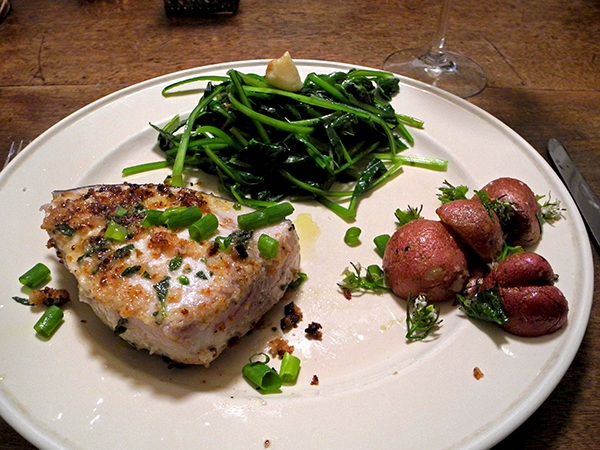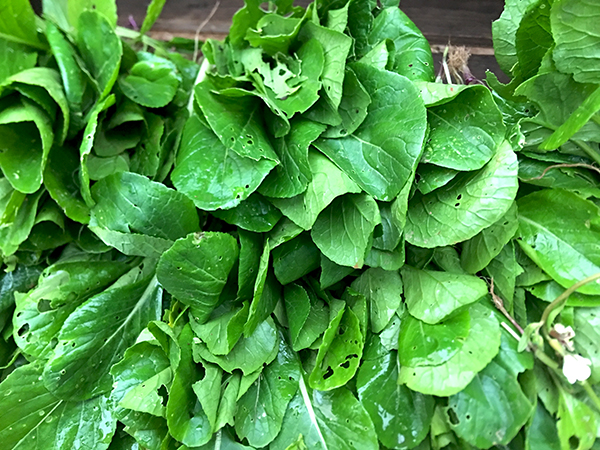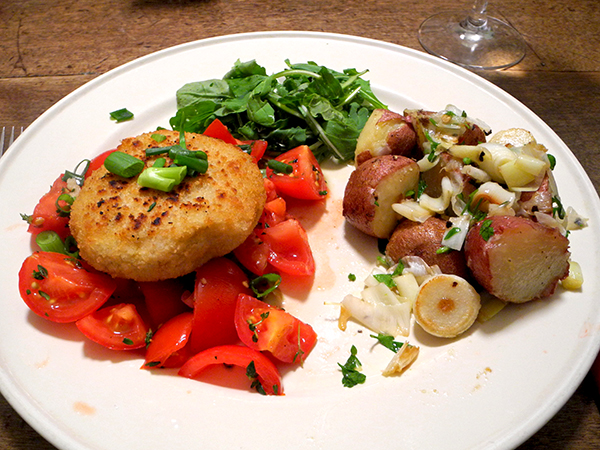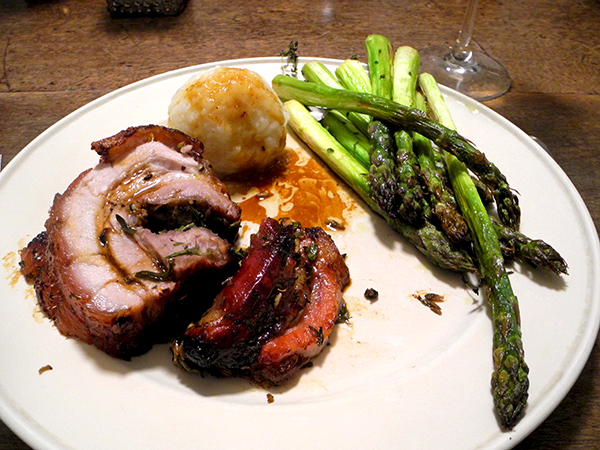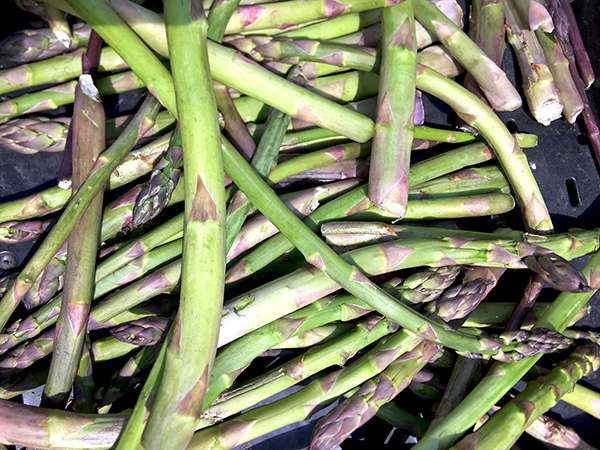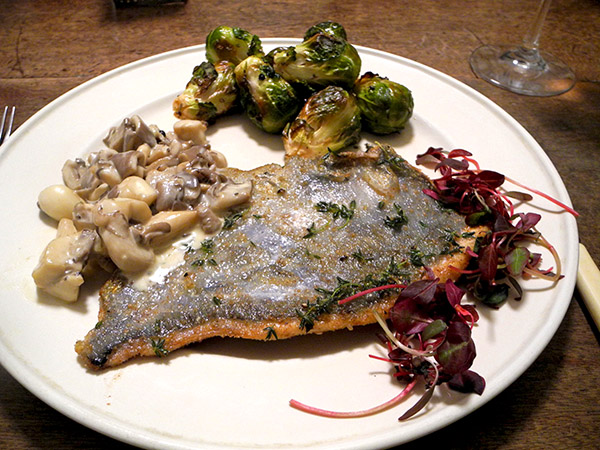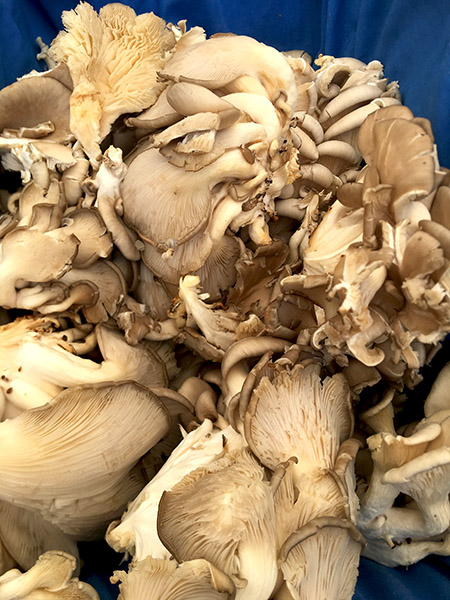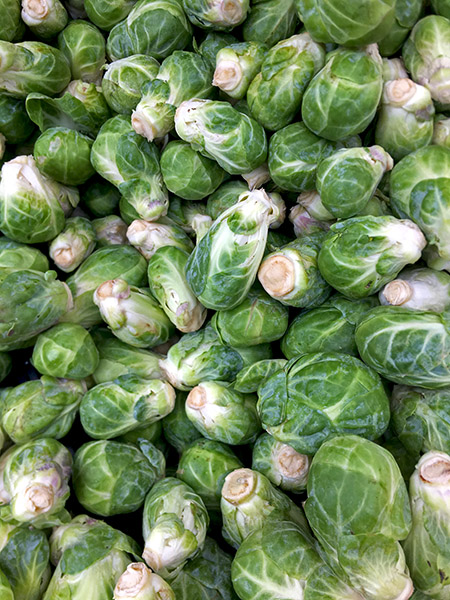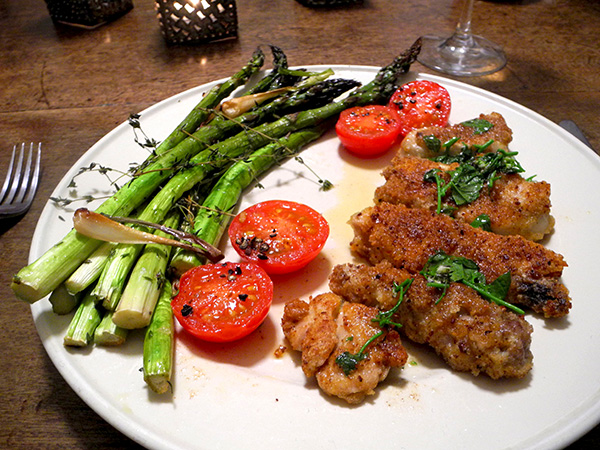
It was another anniversary, this one even more difficult to explain than most, so I’m not going to try.
I will explain what we celebrated it with.
Sweetbreads.
I’ve cooked them before, but always as a braise, incorporating a number of aromatic vegetables and ending up with a real sauce. This time I decided I wanted to go for a minimal treatment, meaning, breaded and sautéed, finished with butter, lemon, and an unusual aromatic micro green.
Looking around for a basic treatment, I basically transcribed the routine that James Peterson shows to Martha Stewart in this video.
They had the taste and texture of veal cutlets good enough to be served to the angels, if angels ate. Fortunately we both do.
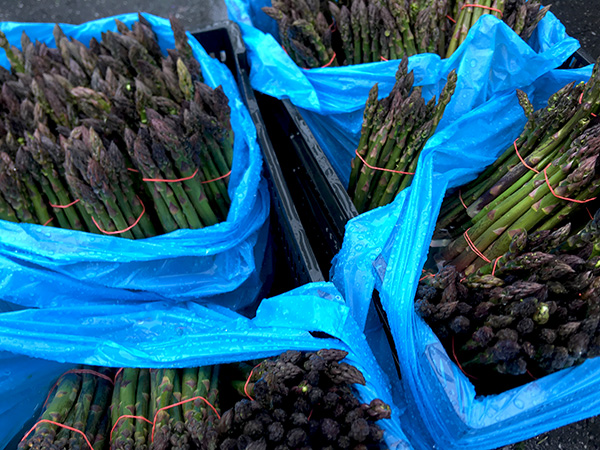
I accompanied them with asparagus because, well, ..asparagus, and there were also ramps, for the same reason. Both were delicious, even if we had to deal with the fact that I forgot to snap off the tough bottoms of the asparagus (even peeled, they can be pretty chewy).
The tomatoes were introduced for color, but their acidity was a good complement to the richness of the sweetbreads.
- one frozen package of veal sweetbreads (.65 lbs), from Consider Bardwell Farm, defrosted slowly and soaked in salted water overnight, the next day, covered with cold water, slowly brought to the simmer and kept inside the pan for maybe about 5 to ten minutes), the sweetbreads then drained and spread out on a sheet panon top of a piece of parchment paper large enough to be drawn over it and another sheet pan, weighted (I used some filled cans), placed on top, the whole contraption allowed to rest in the refrigerator for 6 or 7 hours, after which the meat was placed on the counter and any little pieces of fat and tissue removed, the sweetbreads then sliced into sections about half an inch thick, dipped in local North Country Farms Stone Ground Whole Wheat Flour, then in a bowl in which one local egg from Millport Dairy Farm had been beaten with salt, and finally coated with some fine homemade crumbs from a variety of local breads, gently sautéed in clarified butter over a medium hot flame, keeping them at a medium sizzle (shaking them as they were first placed into the pan, to keep them from sticking), removed to 2 plates, where they were drizzled with a little melted butter in which some cut garlic mustard (flowers and the smaller, more tender leaves) from Windfall Farms, had been tossed, and a little juice of a sweet local lemon from Fantastic Gardens of Long Island
- four halved Backyard Farms Maine ‘cocktail tomatoes’ from Whole Foods Market placed, cut side down, into the pan for a couple minutes after the sweetbreads had been removed, seasoned with Maldon salt and freshly-ground Tellicherry pepper, and arranged on the plates
- eighteen or so stalks of moderately-thick-stemmed green asparagus spears from Stokes Farm, trimmed, the thicker sections of the stems peeled, mixed with the white sections of 8 or so ramps from Berried Treasures rolled with a handful of thyme branches from Eataly in a little more than a tablespoon of olive oil, a little sea salt, and a bit of freshly-ground Tellicherry pepper inside a large Pampered Chef unglazed ceramic pan and roasted at 425º for about 20 minutes removed to 2 plates and drizzled with more juice from the sweet local lemon
- the wine was a California (Lodi) white, David Akiyoshi Reserve Chardonnay 2015, from Naked Wines
- the music was Paul Hindemith’s 1956-1957 opera, ‘Die Harmonie Der Welt’, performed by Marek Janowski conducting the Berlin Radio Symphony Orchestra and the Berlin Radio Chorus [the piece is based on the work of Johannes Kepler (1571-1630), astronomer, astrologist, theologian, philosopher and mathematician]
